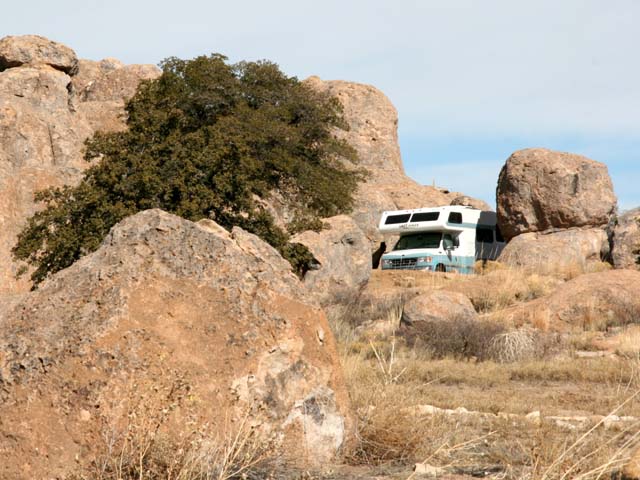Vinland.
The Vikings in North America BEFORE Christopher Columbus.
Facts. Just dry facts that have been rattling around in my brain for years, ever since I had to learn them in a long ago history class.
But they are dry facts no more.
The reason? A very special place in northern Newfoundland on the tip of the province's Great Northern Peninsula: L'Anse aux Meadows. It was - and still is - a very small fishing village. But it is also home to a 1,000 year old Viking settlement that many archaeologists believe is Leif Eriksson's Vinland.
The discovery of this settlement was a long time in the making. It started with the Viking sagas, tales of adventure that were passed from generation to generation in the oral storytelling tradition of the Vikings, until they were finally written down in the 13th century. Two of the sagas (the Greenland Saga and Erik's Saga) tell the story of Leif Eriksson and Vinland.
Based on information in these sagas, many folks over many years have tried to find Vinland. Most agreed that it was somewhere between Labrador and New England, but no evidence of a settlement was ever found.
Until 1960, when a Norwegian historian and explorer named Helge Ingstad met a L'Anse aux Meadows fisherman named George Decker.
Ingstad had been on a quest to find the Vinland of the Viking sagas and his research had led him to Newfoundland. He arrived in L'Anse aux Meadows by boat as it was not accessible by road at that time. He met George Decker, a local fisherman, and asked him if there were any unusual terrain features nearby, specifically any low ridges or mounds (in Norway, Greenland and Iceland, those kinds of features would sometimes prove to be the overgrown remains of Viking longhouse walls).
Much to Ingstad's delight, Decker said yes and led him to some low grassy mounds. The locals had thought them to be old Indian burial grounds, but Helge Ingstad believed otherwise.
The following year, Ingstad and his wife, archaeologist Anne Stine, returned to begin an exploratory excavation. They found enough to encourage them to keep digging: a fireplace with flat rocks, a cooking pit and an ember pit, all similar to archaeological discoveries that had been made in Greenland and Norway. They returned the following year with a group of American, Canadian and Scandinavian archaeologists and began a full excavation.

The low grassy mounds, restored to their pre-1960 condition
(after several years of archaeological excavation).
(after several years of archaeological excavation).
Over the next two years, the team unearthed the foundations of eight buildings. One of these buildings clearly indicated to the archaeologists that the Vikings had once lived at L'Anse aux Meadows: a smithy, used to process iron (in the case of L'Anse aux Meadows, bog iron). The Vikings were known to have smelted bog iron, but it was not known to the native people of Newfoundland.
In addition, many artifacts were uncovered, among them an Icelandic stone lamp and a bronze ring-headed pin of the type used by the Vikings to fasten their cloaks.

The bronze ring-headed pin
One of the most important discoveries at L'Anse aux Meadows was a tiny stone wheel called a spindle whorl. It would once have been used as the flywheel of a handheld spindle, a simple tool for spinning wool. Near the spindle whorl, a small whetstone was found. Near the whetstone was a small pair of scissors and some bone needles. All of these were traditionally part of a Viking woman's sewing kit. This was not only further proof that the settlers at L'Anse aux Meadows were Viking; it also meant there had been women in Vinland, just as the sagas had stated.

The spindle whorl
Carbon-14 testing of charcoal from several hearths dated to approximately 1,000 A.D. So it was time to rewrite the history books...Christopher Columbus was 500 years late to the party!
But the Viking sagas indicate that Vinland was inhabited for less than ten years, and archaeologists agree.
So what happened to our fearless Vikings? Why didn't they hang around long enough to be able to lay full claim to the European discovery of North America?
A possible answer can be found in the sagas. They tell of fierce conflict with the native people of the area. The Vikings at L'Anse aux Meadows were, by all accounts, not the warriors of other Viking legends, but farmers and fishermen. They were outnumbered and outfought and possibly felt that Vinland simply wasn't worth the effort. So they packed up virtually all of their belongings and sailed home to Greenland.
Over the next one thousand years, the Viking longhouses crumbled and were overgrown with grasses and wildflowers. They remained hidden until a tenacious Norwegian, with the help of a Newfoundland fisherman, would recognize those low grassy mounds for what they truly were: evidence of a Viking presence in North America more than 500 years before the 1492 voyage of Christopher Columbus. And the means by which to convert dry facts into fascinating history. :-D
To be fair, I do feel compelled to add that while historians are unanimous in their opinion that L'Anse aux Meadows is undisputedly a 1,000 year old Viking settlement, they remain divided over whether or not it is, indeed, the legendary Vinland of the Viking sagas. Many historians believe L'Anse aux Meadows was not a permanent settlement, but was merely a base camp from which the Vikings explored the entire Atlantic coast of Canada. That entire coast, they believe, is the true Vinland.

A reconstructed longhouse, based on the archaeology at L'Anse aux Meadows

Sitting in Leif Eriksson's Longhouse

I found a Viking!
--- Barbara (currently in Louisbourg, Nova Scotia)
Day 81
Total miles: 8,043

1 comment:
How exciting to travel all the way to New.found.land only to find an Older Fossil...
Post a Comment